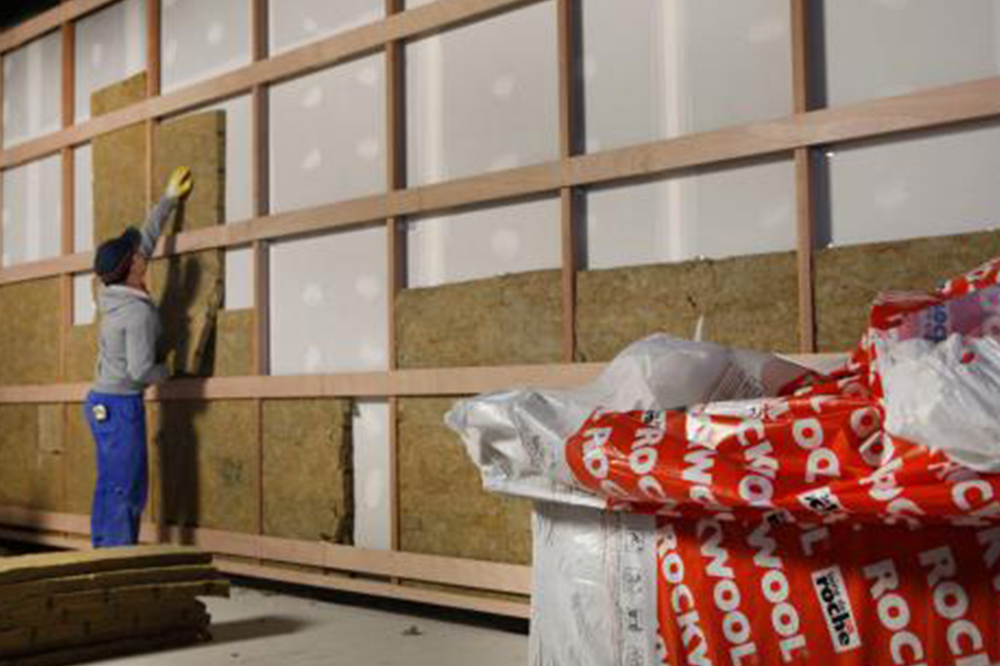ROCKWOOL is a rock-based mineral fiber comprised of Basalt rock and slag that is recycled. Basalt is a that originates in volcanoes. The slag generated is a by-product of the steel and copper industry. These minerals are melted and spun into fibers. The resulting thread-like structure is rock wool. This indicates that there are a high temperature and pressure component involved in the manufacturing process.

Rock Wool fiber production
Rock wool fiber production involves heating natural rock in a blast furnace to about 3,000 degrees until it softens and melts into a liquid. This high density molten liquid magma is exposed to a high-pressure jet of air and steam. The molten mass is spun at super-high speed into long fiber strands to extract rock wool fiber.
Rock wool fiber sizing .
To manufacture ROCK WOOL, molten rock is subjected to high pressure. The resulting process results in the formation of rock strands. These strands are captured and compressed into thick, dense mats under high pressure and temperature. These are cut into convenient-sized batts of insulation.
Rock wool Manufacturing process
Rock wool fiber manufacturing involves melting rock (Magna) under very high temperatures to ensure the crystals soften. Subsequently, the temperature is increased under high pressure to form the viscous fluid that is drawn into strands.
Ready To Grow Your Business?
Mirra Bts is a leading provider of Customized Aerocon Service from the design and engineering
Properties of Rock Wool
Rockwool is a porous material that allows moisture to escape from the construction and hence prevents moisture accumulation. This reduces the risk of mold and bacterial growth on the inside of the property resulting in a dry environment. Rock wool constitutes a compression-resistant material. This is used as roofing boards and in bonded panels.

Rock Wool – Mineral wool
Mineral wools are fibrous materials formed by spinning or drawing molten mineral or rock materials at high temperature and pressure. Rock wool finds application in thermal insulation, filtration, and soundproofing application. At normal temperature, these material are stable at
normal temperature.
Rock wool –Applications
Rock wool materials find application in High thermal efficiency area –In furnaces .These materials have high sound proof properties .These posses excellent fire retardant properties .Posses high chemical resistance .
Frequently Asked Question
1)Are Rock wool fibers Echo friendly?
Rock wool fibres have natural materials as raw materials for production. They are chemically inert and don’t produce toxic fumes or ingredients that are harmful to nature. The rock wool waste material can be reused as a raw material in the manufacturing process.
2) What is Rock wool composition ?
Rock wool mixture consists of basalt, anorthosite, and cemented briquettes. They are heated up more than 15000c at which the rock mixture becomes molten. This is then spun into fibres. A binder and mineral oil are added which stabilizes the spun rock wool fibres and makes them water repellent and moisture resistant.
3)How is Rock wool used for noise control?
Rock wool offers noise insulation due to high densities and random fibre standard orientation. This arrangement traps sound waves, reduces, and dampens vibration time. This is a perfect choice to minimize noise.
4)How about Rock wool compression –resistance properties ?
a compression-resistant material
as the inherent qualities were derived at higher temperatures. These properties can be used for bonded panels and roofing solutions. The ability to withstand high mechanical impact and shock is unique.
5)How is Rock wool fiber produced ?
Rock wool fibre production involves
heating natural rock in a blast furnace to about 3,000 degrees until it softens and melts into a liquid. This high density molten liquid magma is subjected to a high-pressure jet of air and steam. The molten mass is spun at super-high speed into long fiber strands to extract rock wool fibre.
6)How about ecological impact by Rock wool ?
Studies indicate that owing to basic ingredients of rock being the raw material for the development of rock wool, these leave a low carbon footprint on the environment. Safe to use and don’t cause environmental hazards or produce by-products that are harmful.

